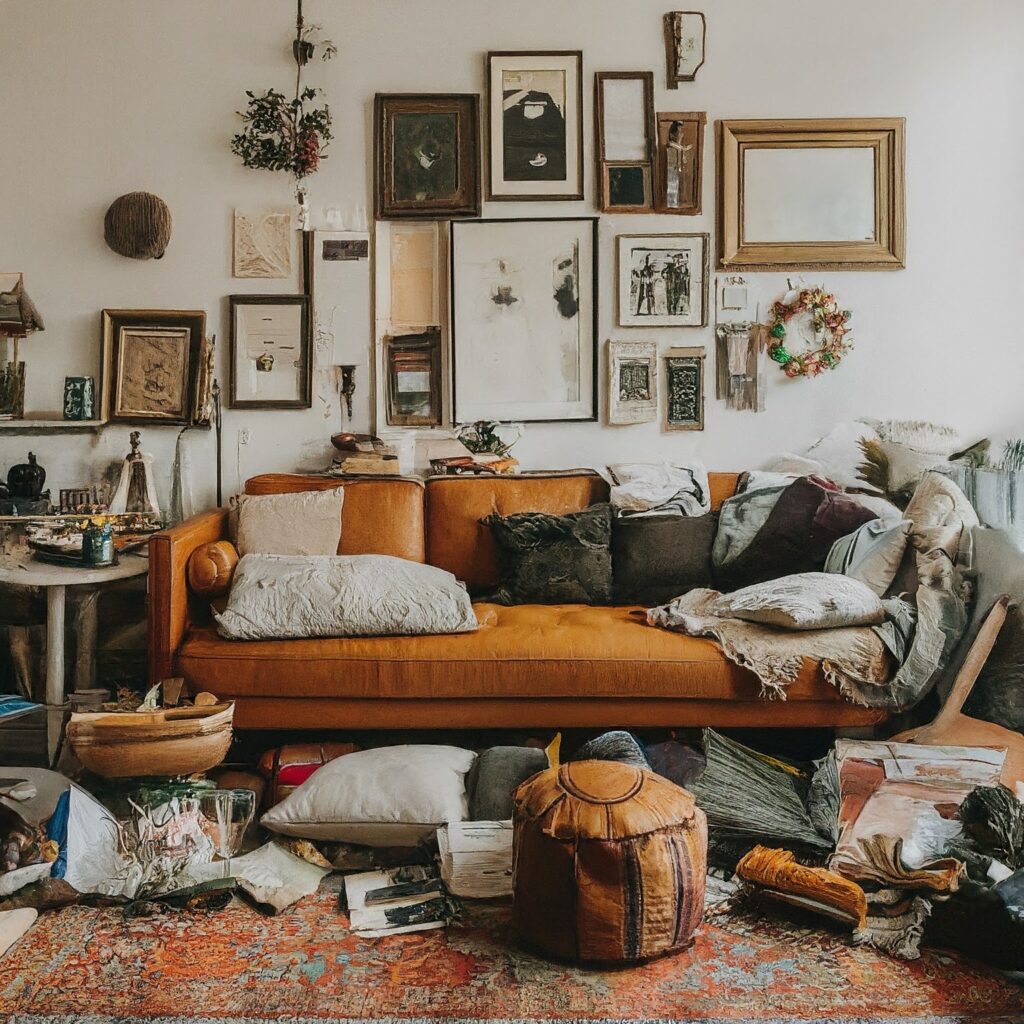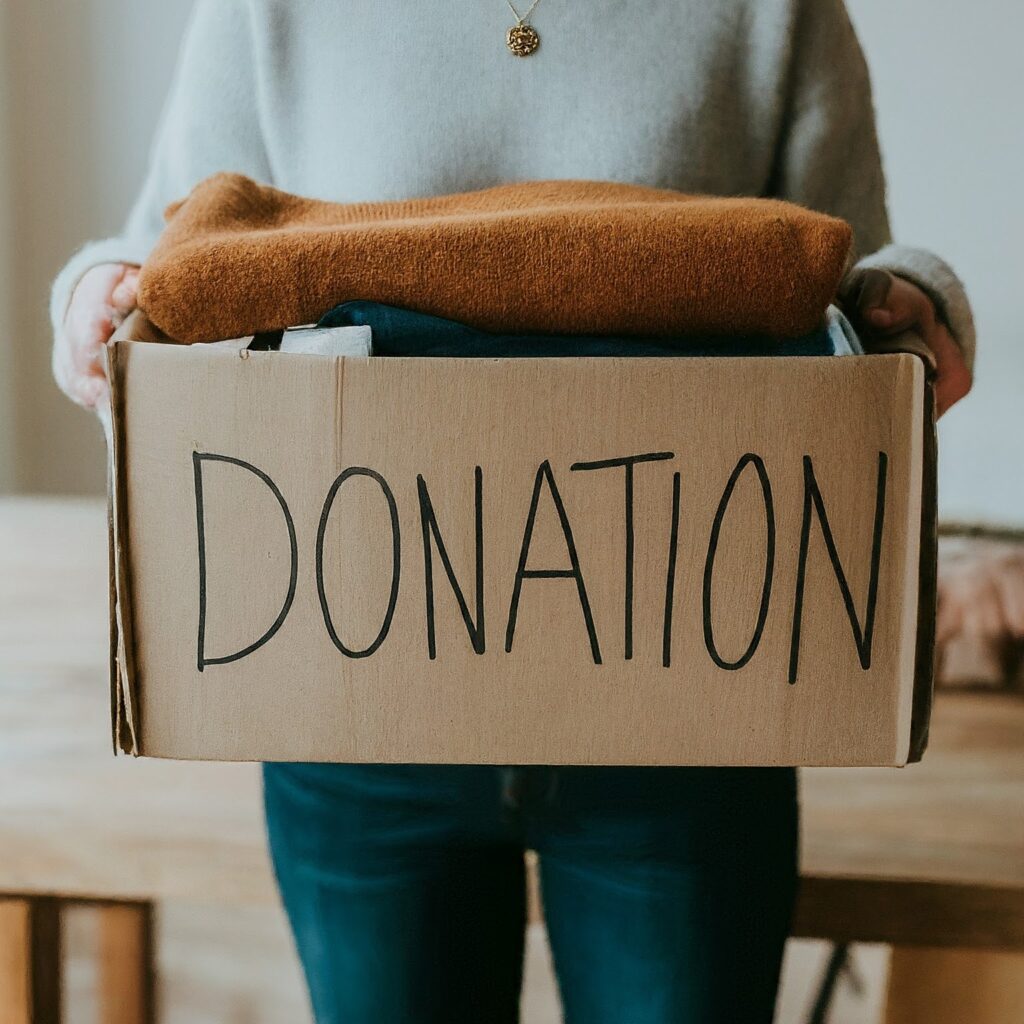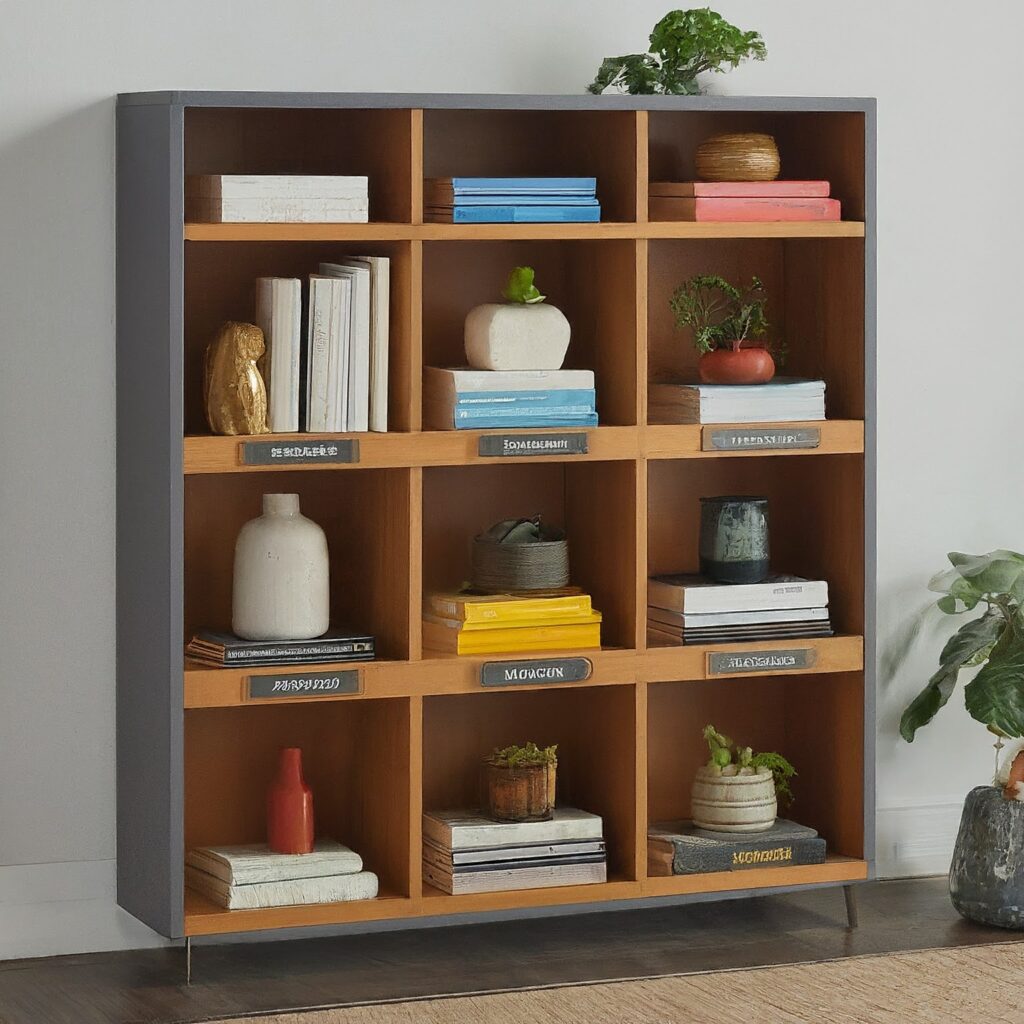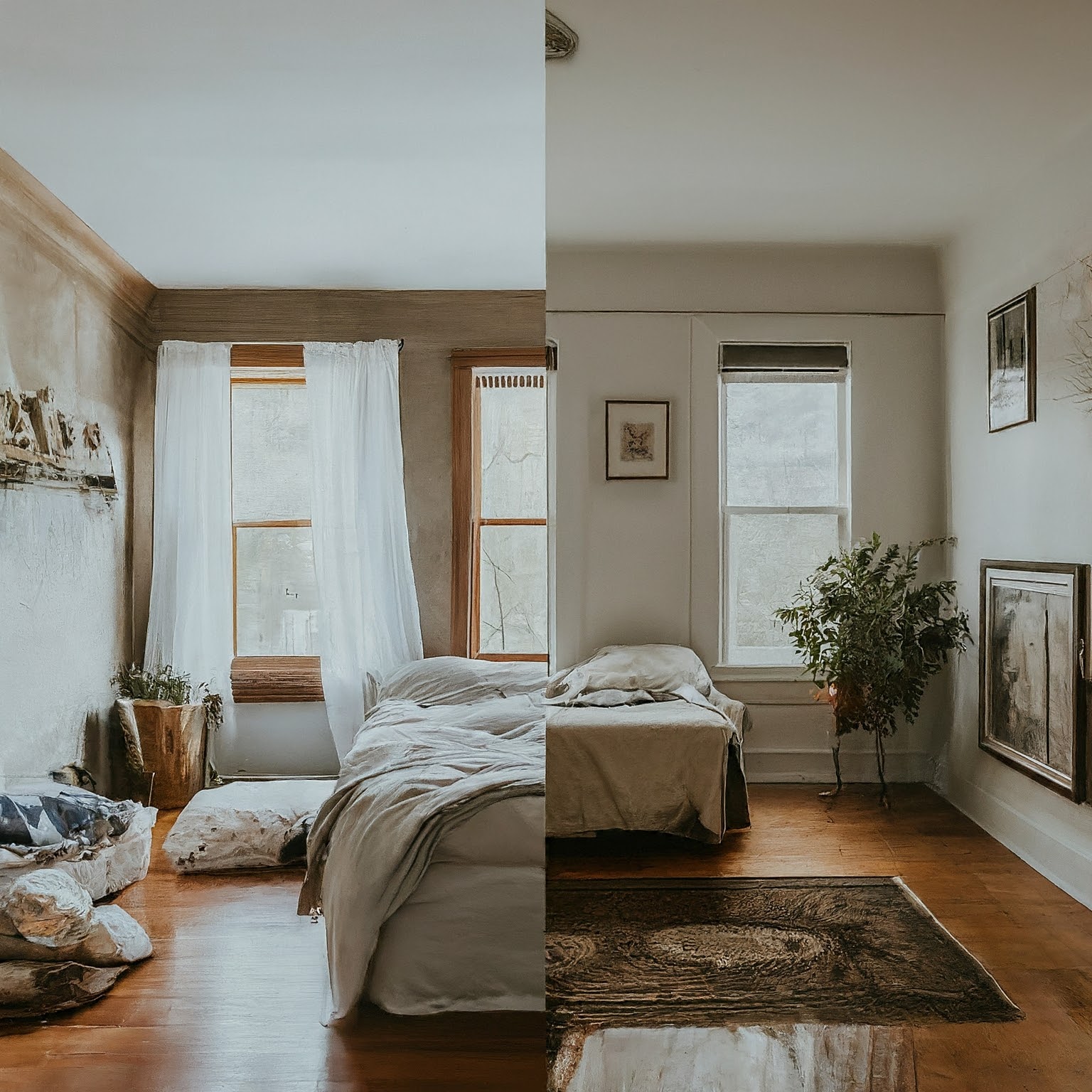Easy-to-follow decluttering tips for hoarders, including organizing and cleaning small spaces. Reclaim your space and find peace of mind.
Introduction
Millions of people worldwide are impacted by this complex issue of Hoarding. It's more than just a messy house; it's a psychological condition that can have a significant impact on a person's life. Hoarders often find it difficult to part with possessions, even if they're no longer useful or valuable. This can lead to cluttered spaces, overwhelming feelings, and even physical health problems.
Understanding the Decluttering Process
Decluttering can be a daunting task, especially for those struggling with hoarding disorder. However, with a systematic approach and a clear plan, it can be achieved. Here's a visual representation of the decluttering process:
What is Hoarding?
Hoarding is more than just collecting items—it’s a behavioral disorder that leads to excessive accumulation of belongings, making it difficult to part with even the most trivial things. Whether it's old newspapers, clothes, or random trinkets, hoarders often feel an emotional attachment to their belongings, leading to overcrowded, cluttered spaces.
Hoarding is a compulsive behavior characterized by the excessive accumulation of items. Hoarders often have difficulty discarding possessions, even if they're worthless or sentimental. This can lead to cluttered living spaces that can make it difficult to function.

Causes of hoarding
The exact causes of hoarding are still being studied, but it's believed to be a complex interplay of genetic, psychological, and environmental factors. Some possible causes include:
- Emotional attachment: Hoarders may have strong emotional attachments to their possessions, making it difficult to let go.
- Fear of loss: Hoarders may fear losing important items or memories.
- Perfectionism: Hoarders may have unrealistic standards of perfection, making it difficult to discard anything that doesn't meet their expectations.
- Trauma: Hoarding can sometimes be a coping mechanism for trauma or abuse.
- Procrastination: Putting off, delaying or deferring a cleaning action to a later time is another cause.
Top 10 Decluttering Tips for Hoarders
Decluttering Can Be Difficult, But Not Impossible
Decluttering for someone with hoarding disorder can feel like a daunting task. However, with the right approach and support, it's absolutely achievable. Here are 10 Decluttering Tips for Hoarders to get started:
1. Start Small and Celebrate Every Win
Don't try to tackle the entire mess at once. Begin with a small, manageable area, like a drawer or a shelf. Set a realistic timer for 15-30 minutes and focus on sorting through that space. Discard anything broken, expired, or unused. Celebrate your accomplishment, no matter how small it seems. Every little bit of progress counts!
2. Employ the “Touch It Once” Rule
As you sort through belongings, develop a "touch it once" strategy. When you pick up each item then ask yourself:
- Have I used this in the past year?
- Does it bring me joy?
- Should I purchase this item again if I didn't already own & use it?
If the answer is no to most of these questions, consider letting it go. Don't put things down "to decide later." Make a clear decision on the spot – keep, donate, or discard.
3. Focus on Function, Not Sentimentality
Letting go of sentimental items can be challenging. Acknowledge the emotional connection you have with them, but also consider their functionality. If you haven't used a sentimental item in years and it's taking up valuable space, ask yourself if keeping it truly serves you. Could you take a photo or write a memory about the item to preserve the sentimentality without holding onto the physical object?
4. Utilize the Power of Categories
Organize your belongings into clear categories. This will make it easier to identify duplicates and items that no longer serve a purpose. Group similar items together, like clothes by type, books by genre, or kitchenware by function. Having a designated space for each category will streamline your decluttering efforts.
5. Embrace the Power of the “Donation Box”
Set up a designated donation box for items in good condition that you no longer need. Knowing these items will find a new home where they'll be used and appreciated can make letting go easier. Consider donating to local charities, shelters, or thrift stores.

6. Befriend the Trash Can
Don't be afraid to throw things away. This applies to broken, expired, or completely useless items. Remember, holding onto something that can't be used is just as much clutter as anything else.
7. Address Safety Hazards First
Before tackling sentimental clutter, prioritize safety hazards. This includes items that block exits, create tripping hazards, or pose fire risks. Address these issues first to create a safer living environment.
8. Seek Support from Loved Ones
Decluttering doesn't have to be a solo mission. Seek the assistance of supporting friends or relatives. Their encouragement and assistance can make the process much less overwhelming.
9. Consider Professional Help
If you're struggling to declutter on your own, don't be afraid to seek professional help. Therapists specializing in hoarding disorder can provide valuable guidance and support. Additionally, professional organizers trained to handle hoarding situations can offer practical assistance in decluttering your home.
10. Reward Yourself Along the Way
Decluttering is a marathon, not a sprint.
Celebrate your progress along the way. Reward yourself for each accomplishment, no matter how small it seems. Treat yourself to a favorite meal, watch a movie, or take a relaxing bath. This positive reinforcement will motivate you to keep going.
Remember, decluttering is a journey, not a destination. It's about creating a living space that feels peaceful and organized. Focus on the process, and trust that the results will follow.
Additional decluttering tips for hoarders of cluttered Small Spaces
If you live in a small apartment or house, decluttering can be even more challenging. Here are a few extra tips to help you maximize your space:
- Utilize vertical storage. Shelves, racks, and hanging organizers can help you make the most of your vertical space.
- Multifunctional furniture. Consider furniture pieces that serve multiple purposes, such as a storage ottoman or a bed with built-in drawers.
- Digital organization. Scan documents and photos to free up physical space.
- Regular maintenance. Once you've decluttered, make a commitment to regular maintenance to prevent clutter from accumulating again.

Overcoming Emotional Hurdles
Hoarding disorder often involves deep-seated emotional issues. Here are some strategies to help you overcome these emotional hurdles:
- Challenge negative thoughts. Replace negative thoughts about discarding possessions with positive affirmations.
- Practice mindfulness. You can control your emotions and stay in the present by practicing mindfulness.
- Seek therapy. A therapist can help you understand the underlying causes of your hoarding behavior and develop coping strategies.
- Guilt and Anxiety: How to Let Go: Letting go of items can trigger intense feelings of guilt or anxiety, especially if you're emotionally attached to your belongings. Remind yourself that it’s okay to part with things that no longer serve a purpose in your life.
- Understanding the Emotional Connection to Possessions: Many hoarders hold onto items because they feel a deep emotional connection to them. It’s important to recognize that while memories are precious, they don’t live in objects—they live in you.
- Techniques for Easing Anxiety While Decluttering: Start small and take frequent breaks to avoid feeling overwhelmed. Practice deep breathing exercises or mindfulness techniques during the decluttering process to keep anxiety in check.
- Celebrating Small Wins: Reward Your Progress:- After completing a decluttering session, reward yourself with something enjoyable, like a favorite snack or a relaxing activity. Celebrating small victories can help motivate you to keep going.
Decluttering vs. Organizing: Understanding the Difference
Decluttering is about letting go of excess items, while organizing involves finding efficient ways to store what you choose to keep. For hoarders, it’s crucial to declutter first and then organize. If you skip the decluttering process, you may end up just shifting items around without truly reducing the clutter.
How Hoarding Affects Daily Life
Hoarding doesn't just affect your home; it impacts your daily life. Living in a cluttered environment can lead to physical hazards like tripping over piles, difficulty navigating rooms, and even serious health concerns from mold, dust, or pests. Beyond the physical, hoarding also strains personal relationships and causes significant emotional distress.
Emotional Impact of Hoarding
Many hoarders experience feelings of shame, guilt, and isolation. The clutter can serve as a physical manifestation of deeper emotional struggles like anxiety, depression, or unresolved trauma. The idea of decluttering can trigger intense fear, leaving individuals feeling stuck in an endless cycle of accumulating and avoiding.
Why Decluttering is Essential for Hoarders
Decluttering isn’t just about having a clean home—it’s about reclaiming your space and mental well-being. By decluttering, hoarders can improve their quality of life, reduce health risks, and foster stronger relationships. Decluttering also creates an environment where it's easier to function and reduces stress.
Best Decluttering Tips for Hoarders
The Mindset Shift: A New Approach
Before you even begin decluttering, it's crucial to shift your mindset. Instead of viewing decluttering as an overwhelming task, approach it as a series of small, manageable steps. Focus on progress rather than perfection. Remember, it's not about throwing everything away—it’s about keeping what truly matters and letting go of the rest.
Prioritizing Spaces: Where to Begin
Start by identifying the spaces in your home that cause the most distress. Is it the living room where piles of items make it impossible to relax? Or is it the kitchen, where cluttered counters make it difficult to cook? Prioritizing high-traffic areas can provide the most immediate sense of relief.
Set Realistic Goals: Don’t Overwhelm Yourself
It’s tempting to try and declutter everything at once, but this can quickly become overwhelming. Set small, realistic goals for each session. For example, commit to spending just 15 minutes a day decluttering one drawer or one corner of a room. Small, consistent progress adds up over time.
Decluttering Small Spaces for Hoarders
Small spaces can quickly become overwhelmed with clutter, but they’re also the easiest to tackle first. Focus on clearing out compact areas like closets, drawers, or bathroom counters. These small wins will build momentum and give you the confidence to tackle larger spaces.
Start with a Single Drawer or Shelf
To prevent feeling overwhelmed, start with something simple. A single drawer or shelf can give you the opportunity to see immediate results without committing to a whole room. As you clear out that one drawer, take stock of what you find—ask yourself if each item is truly necessary or adds value to your life.
Tips for Cleaning a Hoarder’s House
Decluttering a hoarder’s house can feel daunting, but breaking it down into manageable steps makes it easier. Safety should always be your priority.
Safety First: Handling Hazardous Items
Hoarders' homes often contain hidden dangers such as broken glass, expired food, or mold. Wear protective gloves and masks when handling potentially hazardous items. Always ensure proper ventilation if you're dealing with chemicals or musty environments.
Creating a Sorting System: Keep, Donate, Trash
One of the best ways to tackle clutter is to create a simple sorting system. Use labeled boxes or bags to divide items into three categories: keep, donate, and trash. This system gives you clarity and direction as you make decisions on each item.
Dealing with Sentimental Items
Sentimental items are often the hardest for hoarders to let go of. Whether it's a childhood toy or a stack of old letters, these belongings hold emotional weight. A helpful tip is to take photos of items you're emotionally attached to but no longer need. In this manner, you can maintain the memory without retaining the tangible item.
The 15-Minute Decluttering Method
Here’s a simple technique: Set a timer for 15 minutes. Spend that time sorting through one small area, and when the timer goes off, stop. This breaks the task down into bite-sized chunks, making it less overwhelming and much easier to stick with.
More Decluttering Tips for Hoarders with Small Spaces
Maximizing Vertical Storage
Small spaces don’t mean you have to live in chaos. Vertical storage solutions like wall-mounted shelves and over-the-door organizers are a game changer. They free up floor space while keeping your belongings accessible and tidy.
Multi-Functional Furniture Hacks
Consider furniture that does double duty. Ottomans that open up for storage, beds with built-in drawers, and foldable tables are all great options for hoarders living in tight spaces.
Decluttering Tips for Hoarders: Organizing Items
Finding Storage Solutions
Once you’ve decluttered, it’s time to organize what remains. Use practical storage solutions that make it easy to maintain a clutter-free space.
Clear Plastic Bins for Easy Access
Clear plastic bins are ideal because they allow you to see what’s inside without digging through everything. Label each bin for added organization.
How to Stay Organized After Decluttering
The hardest part isn’t decluttering—it’s staying organized once the clutter is gone. Establish daily and weekly routines to maintain your newly organized space.
Daily Maintenance Routine
Spending just 10 minutes a day tidying up can prevent clutter from creeping back in. Make it a habit to return items to their designated spots at the end of each day.
Enlisting Support: Working with Family or Professionals
Decluttering can be emotionally and physically exhausting, so don’t be afraid to ask for help. Whether it's family, friends, or professional organizers, having someone to support you can make the process more manageable and less overwhelming.
Decluttering Tips for Hoarders: Cleaning
Follow these Cleaning tips for hoarders:
Deep Cleaning After Decluttering
Once the clutter is cleared, deep cleaning is essential to make your home feel fresh and new. Focus on high-touch surfaces, dusty corners, and hard-to-reach spots.
Dusting, Vacuuming, and Disinfecting
Start by dusting shelves, baseboards, and furniture. Then, vacuum carpets and floors to remove debris. Finish by disinfecting surfaces like countertops, light switches, and doorknobs to kill germs and bacteria.
Maintaining a Clean Space in the Long Term
Keeping your home clutter-free doesn’t end with one big clean-up. Establish a daily routine for tidying up and a weekly or monthly deep-clean to stay on top of things.
Tips for Cleaning a Hoarder’s House
Room-by-Room Strategy
Tackling an entire house at once can feel daunting. Rather, concentrate on one room at a time. Begin with the easiest room to give yourself a quick win, then gradually move to more challenging spaces.
Enlisting Help When Needed
Don’t be afraid to ask for help! Whether it’s a family member, friend, or professional organizer, having support can make a huge difference in your progress.
Techniques for Easing Anxiety While Decluttering
One effective way to manage anxiety is to focus on one small area at a time. Set a timer for 10 or 15 minutes and commit to decluttering for just that period. You’ll be surprised at how much progress you can make in a short amount of time, and doing so in small bursts makes the task feel less overwhelming. Another helpful technique is practicing mindfulness. Take deep breaths and remind yourself why you're decluttering: to create a cleaner, more functional home.
Celebrating Small Wins: Reward Your Progress
Decluttering is a marathon, not a sprint. Celebrate the small wins along the way! Every bag you donate, every shelf you clear, and every surface you clean is a victory. Whether it’s treating yourself to a favorite snack or taking a well-deserved break, recognizing these achievements keeps you motivated and energized for the next step.
Long-Term Maintenance and Prevention
Keeping a clean home doesn’t end with decluttering and deep cleaning. You’ll need a plan to maintain your space in the long term. Regular cleaning helps you stay on top of things and prevents clutter from returning. Set up a routine that works for you—whether it’s a quick tidy-up every morning or a more thorough clean once a week.
The ‘One In, One Out’ Rule
A great way to prevent clutter from returning is by adopting the ‘One In, One Out’ rule. Whenever you buy something new, commit to getting rid of an old item.
Creating a Daily Cleaning Routine
Incorporating a daily cleaning routine, even if it’s just 10 minutes a day, will help you maintain a clutter-free home. Simple actions like putting things away right after use can make a big difference over time.

Weekly Cleaning Schedule for Hoarders
A weekly cleaning schedule can help you maintain a clutter-free environment. Break down tasks into manageable chunks: dust one day, vacuum the next, and clean bathrooms on another. By spreading out the work, you can keep your home clean without feeling overwhelmed by the process.
Decluttering Tips for Hoarders in Small Spaces
Maximizing Storage in Small Rooms
For hoarders living in small spaces, the limited room can make decluttering feel impossible. But it’s all about being strategic. Look for furniture with built-in storage, like beds with drawers underneath or ottomans that double as storage bins. Vertical storage is also your friend—use shelves and hooks to free up floor space.
The Art of Letting Go in Tight Quarters
In small spaces, every inch counts. Be ruthless when deciding what stays and what goes. Focus on keeping only the essentials and items that truly bring you joy. It might be tough at first, but the freedom of living in a clutter-free space will be worth it. Use the “one in, one out” rule: for every new item you bring into your home, commit to getting rid of one old item.
Decluttering tips for hoarders: A Step-by-Step Guide to Decluttering
1. Identify Problem Areas
- Start small: Begin with a manageable space like a drawer or a closet.
- Prioritize safety: Address any safety hazards first, such as items blocking exits or creating tripping hazards.
2. Gather Supplies
- Essential tools: Gather boxes, bags, markers, and cleaning supplies.
- Labeling system: Create a labeling system to help you organize your belongings.
3. Set Realistic Goals
- Break it down: Divide the decluttering process into smaller, manageable tasks.
- Set a timeline: Establish a realistic timeline for completing each task.
4. Sort and Categorize
- Group similar items: Organize your belongings into categories like clothes, books, or kitchenware.
- Create designated spaces: Assign a specific place for each category to maintain order.

5. Decide: Keep, Donate, or Discard
- Ask yourself questions: Determine if an item is useful, necessary, or sentimental.
- Let go of unnecessary items: Donate, sell, or discard items you no longer need.
6. Store Items Effectively
- Make the most of vertical space: To increase storage, use hanging organizers, shelves, and racks.
- Avoid overcrowding: Ensure items have enough space to prevent clutter from accumulating.
7. Celebrate Progress
- Reward yourself: Acknowledge your achievements and celebrate each milestone.
- Stay motivated: Positive reinforcement can help you stay focused on your decluttering goals.
Decluttering tips for hoarders: Overcoming Emotional Hurdles
- Challenge negative thoughts: Replace negative thoughts about discarding possessions with positive affirmations.
- Seek support: Talk to friends, family, or a therapist about your emotions.
- Develop mindfulness: You can better control your stress and anxiety by using mindfulness techniques.
Additional Decluttering tips for hoarders
- Utilize the "touch it once" rule: Pick up each item and decide whether to keep, donate, or discard.
- Avoid sentimental hoarding: Focus on the functionality of items rather than their emotional value.
- Consider professional help: If you're struggling to declutter on your own, seek guidance from a therapist or organizer.
Remember, decluttering is a journey, not a destination. By following these steps and overcoming emotional hurdles, you can create a more organized and peaceful living space.
A Final Word of Encouragement
Decluttering is a process that takes time and patience. Don't get discouraged if you experience setbacks along the way. Remember, progress is more important than perfection. Following these 'decluttering tips for hoarders' with perseverance and the right strategies, you can create a clutter-free living space that brings you peace and joy.
Conclusion
Decluttering can feel like an impossible task for hoarders, but it’s important to remember that progress, not perfection, is the goal. Start small, celebrate your victories, and don’t hesitate to ask for help when you need it. With patience, persistence, and the right mindset, you can reclaim your home and your life from clutter. Take it one step at a time, and soon, you’ll be living in a space that feels calm, clean, and full of possibility.

FAQs about decluttering tips for hoarders
What’s the best way to start decluttering as a hoarder?
Start with a small area, like a drawer or closet. Use the 15-minute method to break the task down into manageable chunks.
How do I declutter sentimental items?
If you’re emotionally attached to something, take a photo of it before letting it go. This helps preserve the memory without keeping the clutter. Keep in mind above mentioned "Decluttering Tips for Hoarders"
Can I declutter without professional help?
Yes, but professional organizers or therapists can provide valuable guidance and support, especially if you’re dealing with extreme clutter.
What’s the best way to prevent clutter from coming back?
Implement the ‘One In, One Out’ rule. For every new item you bring in, remove one item to keep balance.
How do I clean a hoarder’s house safely?
Wear gloves and masks, and handle potentially hazardous materials carefully. Take it room by room so you don't become overwhelmed.
What should I do if I feel overwhelmed during the decluttering process?
Break the task down into smaller steps, take regular breaks, and focus on one area at a time.
Is there a way to declutter quickly?
While quick decluttering isn’t advisable for hoarders, focusing on one room or task at a time can speed up the process without causing overwhelm. Remember our top 10 Decluttering Tips for Hoarders mentioned in the article.
How do I stay motivated while decluttering?
Celebrate small victories! Reward yourself after completing each task to keep your motivation high.
Can decluttering improve my mental health?
Yes
What should I do with sentimental items?
Consider taking photos or writing memories about sentimental items to preserve the emotional connection without holding onto the physical objects.
How can I prevent clutter from accumulating again?
Once you've decluttered, make a commitment to regular maintenance. Follow our decluttering tips for hoarders, and develop systems for organizing and storing your belongings.
Is it normal to feel anxious or guilty when decluttering?
Yes, it's common to experience emotional distress when letting go of possessions, especially if you have hoarding disorder.
How can I overcome the fear of throwing things away?
Challenge negative thoughts about discarding possessions and focus on the benefits of a clutter-free space.
Can I declutter on my own, or should I seek professional help?
If you're struggling to declutter on your own, don't be afraid to seek professional guidance from a therapist or organizer.
How can I address the emotional issues that contribute to hoarding disorder?
Consider therapy, mindfulness techniques, and challenging negative thoughts.
Is it possible to completely overcome hoarding disorder?
While complete recovery may not always be possible, with the right strategies and support, it's possible to manage hoarding disorder and create a more organized and peaceful living space.
What are some signs that I might be struggling with hoarding disorder?
Signs of hoarding disorder include difficulty discarding possessions, persistent clutter, distress at the thought of throwing things away, and feeling a need to save everything.
How can I get my family or friends involved in the decluttering process?
Enlist the help of supportive loved ones who can offer encouragement and assistance.
What are some common mistakes people make when decluttering?
Trying to do too much at once, focusing solely on sentimental items, and not addressing safety hazards first are common mistakes.
How long does it typically take to declutter a hoarder’s house?
The time it takes to declutter depends on the severity of the hoarding and the individual's willingness to let go of possessions. It can be a lengthy process, but with consistent effort and support, it is achievable.
What are some resources available for people struggling with hoarding disorder?
There are many online resources and support groups available for people with hoarding disorder. You can also seek professional help from a therapist or organizer.
Can hoarding disorder be treated?
Yes, hoarding disorder can be treated with therapy, medication, and self-help strategies.
Is hoarding disorder a mental health condition?
Yes, hoarding disorder is a mental health condition characterized by the persistent difficulty discarding possessions. Above decluttering tips for hoarders can help in this regard.
What are the consequences of hoarding disorder?
Hoarding disorder can have negative consequences on physical and mental health, relationships, and daily functioning.
Can hoarding disorder be prevented?
While it may not be possible to completely prevent hoarding disorder, early intervention and addressing underlying emotional issues can help reduce the risk.
How can I support someone who is struggling with hoarding disorder?
Offer encouragement, understanding, and assistance without judgment. Encourage them to seek professional help and avoid enabling their hoarding behavior.
Is hoarding disorder a genetic condition?
There is some evidence to suggest that genetic factors may play a role in hoarding disorder, but it is not solely determined by genetics. The above decluttering tips for hoarders can help a lot.
Related Post:
Towel Folding Ideas: Elevate Your Skills with 25 Creative Folds

